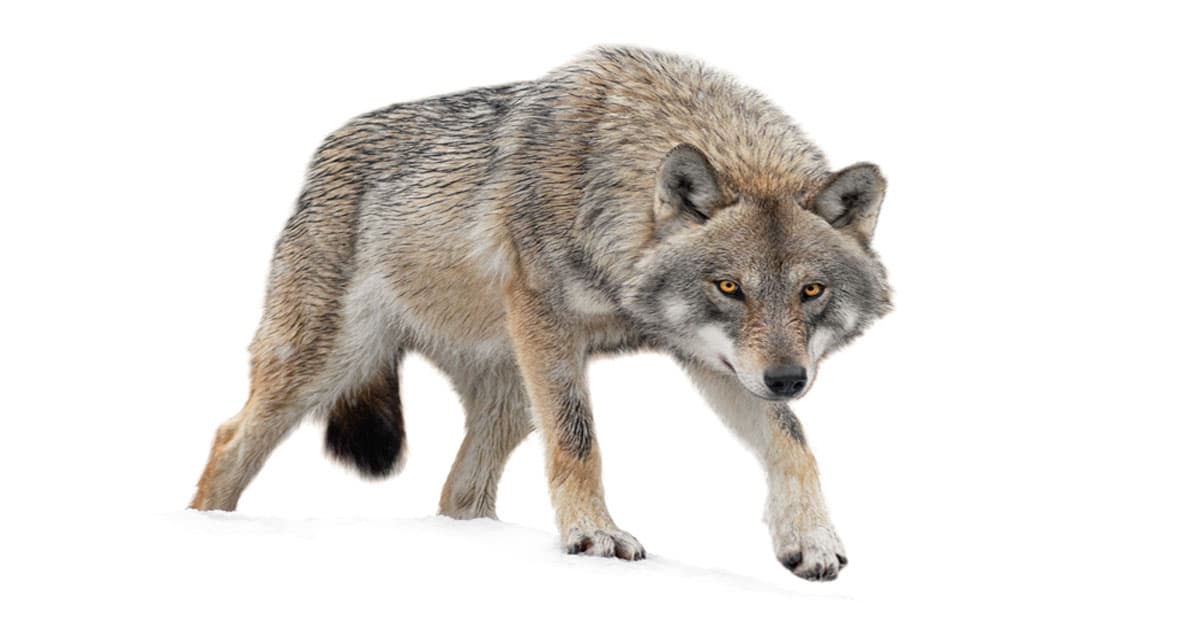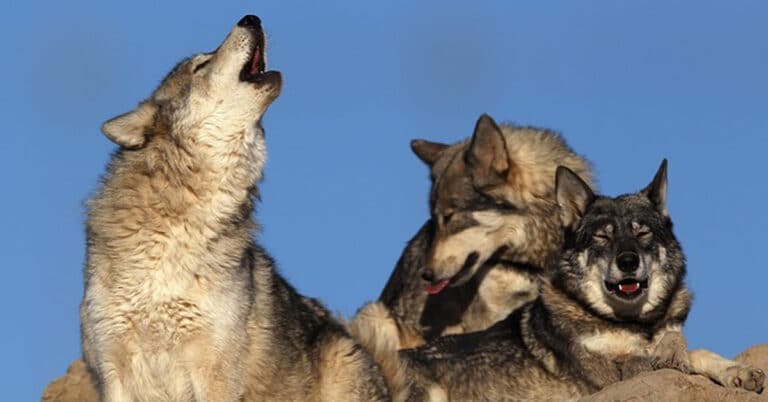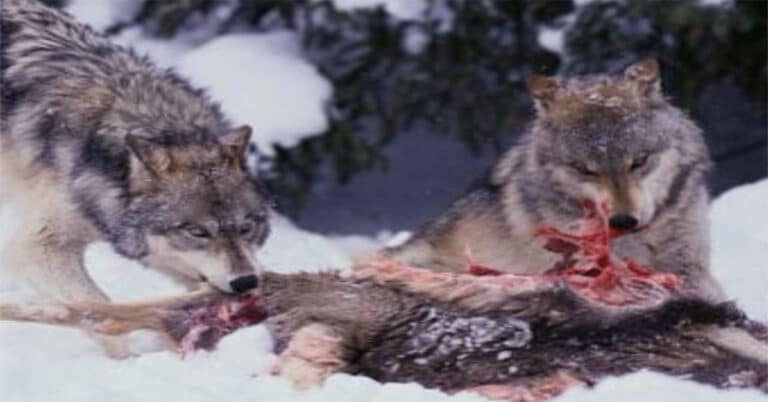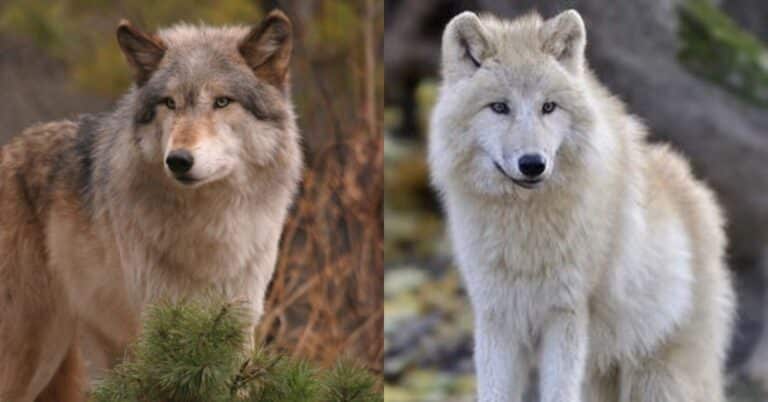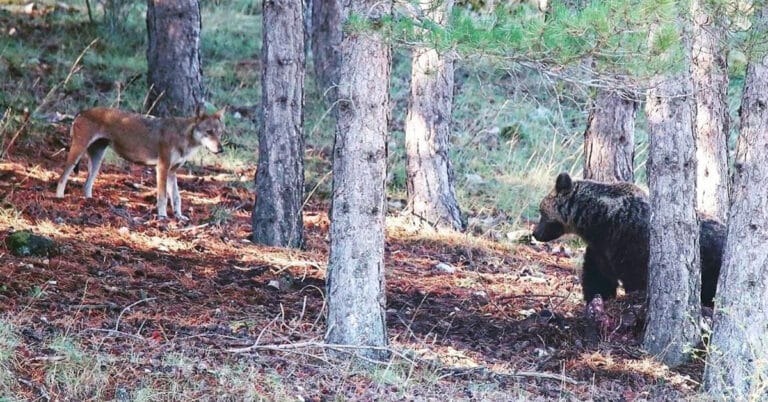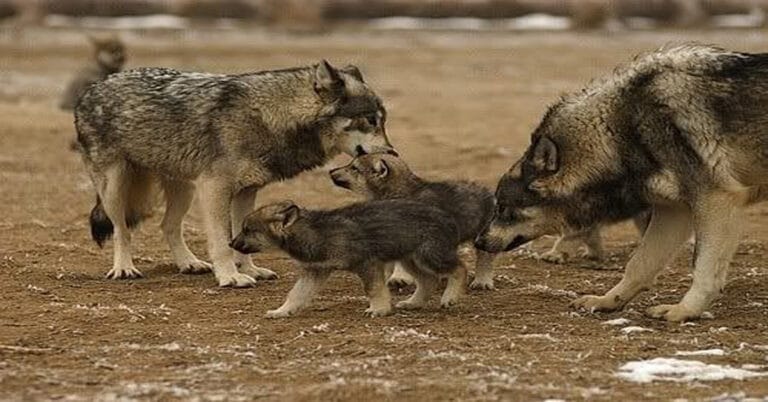Wolf Life Cycle
Are you wondering what the wolf life cycle looks like? These apex predators are among the most remarkable in the animal kingdom since they are the ancestors of modern dogs. Wolves have frequently been used as metaphors for independence, bravery, loyalty, and astute instincts throughout many cultures; you might have read many stories or watched movies about them, and indeed, the wolf life cycle is as interesting as all the scary stories about them.
Wolves have very interesting life habits. However, there is still so much that is unknown about them. What do you know about the wolf life cycle or lifespan? In this article, you’ll find out more interesting facts about these amazing animals.
General Information About Wolves
Wolves represent the largest members of the canid family. Did you know that all of your favorite dog breeds have wolf ancestors? For today, there are currently roughly 40 distinct wolf species.
For all those years, wolves have succeeded in maintaining their position at the top of the food chain thanks to their powerful jaws and fangs. Wolves usually hunt in packs, which makes it easy for them to survive and kill some rather large animals. Elk, moose, bison, and deer are frequently killed by wolves in packs. It’s interesting what the wolf life cycle looks like.
Stages of the Wolf Life Cycle
Even though most mammals’ life cycles seem to be similar, their habits are still different depending on the species. The wolf life cycle also consists of 3 main stages, including newborn, juvenile, and adult wolves. It’s important to point out that these main stages can contain some sub-stages as well. But before we proceed to these stages of the wolf life cycle, let’s first take a look at their breeding and gestation period.
Breeding
The wolf’s reproductive season starts as early as November. In February, when the females are in estrus, hormone levels in both sexes rise in preparation for the breeding season. When a female is in estrus, copulation can take place and she is fertile. Wolves only reproduce once a year, and it always happens around the same time.
In the woods, a male and female will locate a quiet area and start mating. Up to an hour can pass between matings, which are frequently highly raucous. The pair will rejoin their group after mating.
Gestation Period
The gestation period of the wolf life cycle consists of about 60 to 63 days. The location of the den will be selected, if not already established, and both sexes may assist in digging it out. All of the adults in a pack engage in this behavior.
Den locations are often found close to water because the female needs access to it frequently when nursing her pups. Den locations typically lie deep inside the pack’s territory to avoid invasion by other packs.
Newborns
This is the first stage of the wolf life cycle. Close to the end of April, cubs are born. The first three weeks are spent underground. By protecting the den site and supplying food for the alpha female, the members of the pack look after the cubs indirectly.
The Cubs experience the following stages of development:
- Neonatal stage
The neonatal stage lasts from birth to the time when their eyes open (10-14 days). At this stage of the wolf life cycle, the cubs don’t resemble wolves at all. They have white marks on their chests or even their feet and resemble pugs because of how their ears are curled against their large, spherical heads. They are also blind and deaf.
- Transition period
During the transition period, cubs start to get more coordinated and start to stand and walk. When they are about three weeks old, they eventually begin to exhibit an interest in the outside world by coming to the den entrance and taking a quick peek outside before returning to the safety of the den. When they are about 21 days old, their ears start to open.
- The socialization period
In the socialization stage, they won’t spend much time outside the cave for another two weeks, but all the pack members can now provide care, and solid food is consumed. The cubs can suckle from their mother when she is standing. They are fed roughly every 5 hours.
Finally, the wolf life cycle’s first stage ends. They begin to move around with the pack more by the time they are 8 to 10 weeks old, and they are sometimes left at rendezvous locations while the rest of the pack goes hunting.
Around this time, cubs are also known to begin following swiftly moving small animals. Wolf cubs have been seen engaging in these early hunting behaviors even after being hand-reared by humans, suggesting that these habits are hard-wired into wolf cubs.
Juveniles
This is the second stage of the wolf life cycle. The cubs are classified as juveniles at 3 months. They have lots of energy and are likely to explore alone or follow adults away from the den site. Cubs as young as 4 months old can go on hunts with adults, but it will take some time for them to become actively involved. Now is the time to hone your abilities and develop physical strength.
The cubs eventually begin going on hunts with the adults at about 4 to 6 months of age, and by the time they are 9 months old, they are capable of taking down small prey.
Although juveniles can stay in the family pack for up to three years and, in some cases, for their whole lives, cubs have been known to leave their family group at this age. They may disappear for brief periods. Hunger is yet another explanation for dispersal. The alphas may hoard the majority of the food for themselves and the young when the next litter is born the following spring, forcing the juveniles to scatter or starve.
Adults
The final stage of the wolf life cycle is adolescence. This is the stage when juveniles reach sexual maturity. Some might begin to spread out in the hopes of coming across other wolves who are also spreading out and forming new packs. Others can choose to stay with their family unit and join the subordinate adult hierarchy of the pack as their puppy status no longer works.
The wolves reach full maturity at 3 years old. Particularly among captive socialized male wolves, the males exhibit tremendous dominance, which makes them harder to handle or acclimate to new individuals.
Interestingly, adult wolves have excellent problem-solving skills and intelligence. Through trial and error, hunting tactics can be altered, and sophisticated behaviors can be observed in those who win or steal food from others. It has been demonstrated that they have long memories, identifying people from their childhood decades later or recalling wrongdoings from the past. That’s why there are many stories about the friendship between humans and wolves.
However, wolves start to fight when they see danger, so friendship with an old friend might not be a brilliant idea. However, people have long noticed a “good friend” potential in wolf puppies, so the dog has been domesticated by humans to retain its puppy-like characteristics well into adulthood; a wolf quits this behavior fairly early.
Wolf Lifespan
At around the 7 to a 9-month point, there is a noticeable change in the attitude and temperament of captive wolves. Wolves have a difficult time surviving in the wild, and many do not make it past their first year.
Among the main risks to avoid are hunger, sickness, and threats from humans or other predators. When wolves disperse, they are shot or killed on highways, which results in many more deaths. A natural wolf’s lifespan is usually 6 or 7 years, yet it can live up to 16 years or longer in captivity.
Did You Know?
- According to National Geographic, wolves are said to have been originally domesticated in East Asia some 15,000 years ago.
- After people and animals, gray wolves are the most common big land mammals on the globe.
- A wolf pack is any group of wolves with a set territory.
- Wolves are capable of going longer than a week without food.
- One of the wolves with the highest recorded weight was 130 lbs.
- Up to six puppies can be born to a wolf’s female.
- Many wolf species have gone extinct, while others are still in danger of extinction.
- Alphas are the strongest male and female pairs who are in charge of the pack.
- It is thought that the full pack will help with childbirth.
- The hearing of a wolf is twenty times better than a human’s.
- A wolf may consume up to 9 kg in a single meal. This applies to flesh, fur, and bones.
Final Words – Wolf Life Cycle
Now you know what the wolf life cycle looks like. Wolves themselves are fascinating mammals. These creatures rank among the most complicated and advanced animals based on their mating, breeding, or living routines.
Wolves are regarded as one of the most dreadful creatures in the animal kingdom, even though they hardly ever attack humans. Numerous wolves have been killed as a result of their propensity to attack domestic animals. Maybe we just need to stay away from their habitat, and that would simply fix the problem.

Nato is a content writer and researcher with a background in psychology who’s eager to explore the wonders of nature. As a travel enthusiast and animal lover, she hopes to inspire others to discover and cherish the beauty and importance of the natural world.

